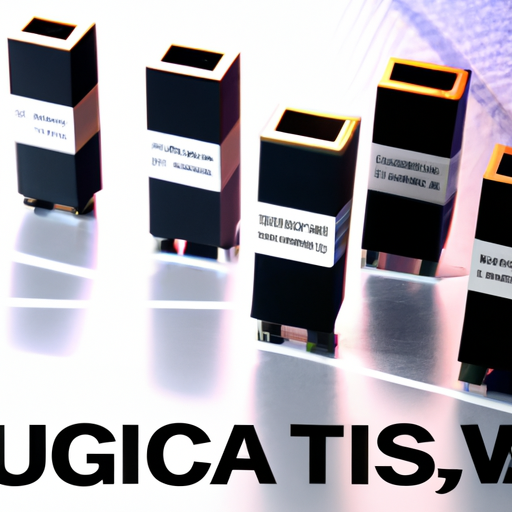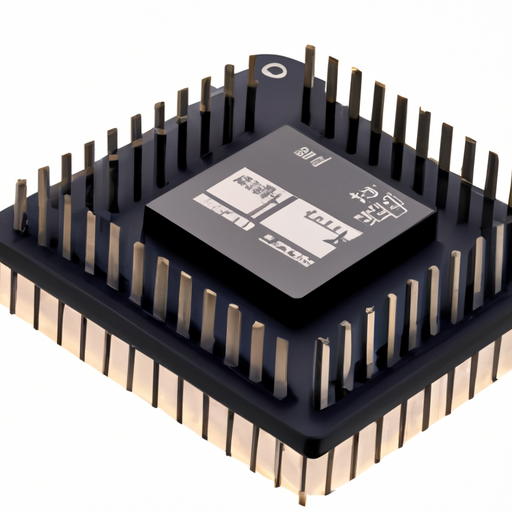What is the current situation of the power capacitor industry?
Current Situation of the Power Capacitor Industry
I. Introduction
A. Definition of Power Capacitors
Power capacitors are electrical components that store and release electrical energy in a circuit. They are essential for managing power quality, improving efficiency, and stabilizing voltage levels in electrical systems. By providing reactive power support, power capacitors help maintain the balance between active and reactive power, which is crucial for the reliable operation of electrical networks.
B. Importance of Power Capacitors in Electrical Systems
In modern electrical systems, power capacitors play a vital role in enhancing the performance and reliability of power generation, transmission, and distribution. They are used in various applications, from industrial machinery to renewable energy systems, ensuring that electrical systems operate smoothly and efficiently. Their ability to mitigate power factor issues and voltage fluctuations makes them indispensable in today's energy landscape.
C. Overview of the Power Capacitor Industry
The power capacitor industry has evolved significantly over the years, driven by technological advancements, increasing demand for energy efficiency, and the growing integration of renewable energy sources. This blog post will explore the current situation of the power capacitor industry, including its market landscape, applications, technological innovations, regulatory considerations, challenges, and future trends.
II. Historical Context
A. Evolution of Power Capacitors
The development of power capacitors dates back to the early 20th century when they were first used in electrical systems to improve power factor and voltage stability. Over the decades, advancements in materials and manufacturing processes have led to the creation of various types of capacitors, each designed for specific applications and performance requirements.
B. Key Milestones in the Industry
Significant milestones in the power capacitor industry include the introduction of film capacitors in the 1960s, which offered improved performance and reliability compared to traditional electrolytic capacitors. The 1980s saw the emergence of high-voltage capacitors, enabling their use in transmission systems. More recently, the integration of smart technologies and IoT has transformed the way power capacitors are monitored and managed.
C. Technological Advancements Over the Years
Technological advancements have played a crucial role in enhancing the performance and efficiency of power capacitors. Innovations in materials, such as the use of polymer films and advanced dielectric materials, have led to capacitors with higher energy density, lower losses, and improved thermal stability.
III. Current Market Landscape
A. Global Market Overview
1. Market Size and Growth Rate
As of 2023, the global power capacitor market is valued at approximately $XX billion, with a projected compound annual growth rate (CAGR) of XX% over the next five years. This growth is driven by the increasing demand for energy-efficient solutions and the expansion of renewable energy sources.
2. Key Regions and Their Contributions
North America, Europe, and Asia-Pacific are the leading regions in the power capacitor market. North America is driven by the modernization of electrical infrastructure and the growing adoption of renewable energy technologies. Europe is focusing on sustainability and energy efficiency, while Asia-Pacific is experiencing rapid industrialization and urbanization, leading to increased demand for power capacitors.
B. Major Players in the Industry
1. Leading Manufacturers
Key players in the power capacitor industry include companies such as Siemens AG, ABB Ltd., Schneider Electric, Eaton Corporation, and Vishay Intertechnology. These companies are known for their innovative products and extensive research and development efforts.
2. Market Share Analysis
The competitive landscape of the power capacitor industry is characterized by a mix of established players and emerging companies. Leading manufacturers hold a significant share of the market, but smaller companies are gaining traction by offering specialized products and solutions.
C. Types of Power Capacitors
1. Film Capacitors
Film capacitors are widely used in power applications due to their high reliability and low losses. They are commonly used in power factor correction and energy storage applications.
2. Ceramic Capacitors
Ceramic capacitors are known for their compact size and high voltage ratings. They are often used in high-frequency applications and power electronics.
3. Electrolytic Capacitors
Electrolytic capacitors are used in applications requiring high capacitance values. They are commonly found in power supply circuits and energy storage systems.
4. Others
Other types of power capacitors include tantalum capacitors, supercapacitors, and hybrid capacitors, each serving specific applications and performance requirements.
IV. Applications of Power Capacitors
A. Power Generation and Distribution
Power capacitors are essential in power generation and distribution systems, where they help improve power factor, stabilize voltage levels, and enhance overall system efficiency.
B. Renewable Energy Systems
1. Wind Energy
In wind energy systems, power capacitors are used to manage reactive power and improve the stability of the grid connection.
2. Solar Energy
Solar inverters utilize power capacitors to ensure efficient energy conversion and grid integration, helping to maintain voltage stability.
C. Industrial Applications
Power capacitors are widely used in industrial applications, including motor drives, manufacturing processes, and power quality improvement solutions.
D. Consumer Electronics
In consumer electronics, power capacitors are used in power supply circuits, audio equipment, and various electronic devices to enhance performance and reliability.
V. Technological Innovations
A. Advancements in Capacitor Technology
1. High Voltage Capacitors
The development of high voltage capacitors has enabled their use in transmission systems, allowing for efficient long-distance power transmission.
2. Smart Capacitors
Smart capacitors equipped with monitoring and control capabilities are becoming increasingly popular, enabling real-time data analysis and improved system management.
B. Role of Nanotechnology
Nanotechnology is playing a significant role in enhancing the performance of power capacitors. By utilizing nanomaterials, manufacturers can create capacitors with improved energy density, reduced size, and enhanced thermal stability.
C. Impact of Digitalization and IoT
The integration of digital technologies and IoT in power capacitor systems is transforming the industry. Smart grids and connected devices enable better monitoring, predictive maintenance, and optimized performance.
VI. Regulatory and Environmental Considerations
A. Industry Standards and Regulations
The power capacitor industry is subject to various standards and regulations aimed at ensuring safety, performance, and environmental sustainability. Organizations such as the International Electrotechnical Commission (IEC) and the Institute of Electrical and Electronics Engineers (IEEE) set guidelines for capacitor design and testing.
B. Environmental Impact of Power Capacitors
The production and disposal of power capacitors can have environmental implications. Manufacturers are increasingly focusing on sustainable practices, such as using eco-friendly materials and reducing waste.
C. Sustainable Practices in Manufacturing
Sustainable manufacturing practices, including energy-efficient production processes and recycling initiatives, are becoming more prevalent in the power capacitor industry.
VII. Challenges Facing the Industry
A. Supply Chain Disruptions
The power capacitor industry has faced supply chain disruptions due to global events, such as the COVID-19 pandemic. These disruptions have affected the availability of raw materials and components.
B. Competition from Alternative Technologies
The rise of alternative technologies, such as energy storage systems and advanced power electronics, poses a challenge to the traditional power capacitor market.
C. Economic Factors and Market Volatility
Economic fluctuations and market volatility can impact the demand for power capacitors, making it essential for manufacturers to adapt to changing market conditions.
VIII. Future Trends and Opportunities
A. Growth of Electric Vehicles (EVs)
The increasing adoption of electric vehicles presents significant opportunities for the power capacitor industry, as capacitors are essential for energy storage and power management in EV systems.
B. Expansion of Renewable Energy Sources
The global shift towards renewable energy sources, such as wind and solar, will drive demand for power capacitors, particularly in energy storage and grid stabilization applications.
C. Innovations in Energy Storage Solutions
Advancements in energy storage technologies, including supercapacitors and hybrid systems, will create new opportunities for power capacitor manufacturers.
D. Potential for Market Expansion in Emerging Economies
Emerging economies are experiencing rapid industrialization and urbanization, leading to increased demand for power capacitors in various applications.
IX. Conclusion
A. Summary of Key Points
The power capacitor industry is at a pivotal point, characterized by technological advancements, growing demand for energy efficiency, and the integration of renewable energy sources. With a diverse range of applications and a competitive market landscape, the industry is poised for continued growth.
B. Outlook for the Power Capacitor Industry
As the world transitions towards a more sustainable energy future, the power capacitor industry will play a crucial role in enabling efficient power management and supporting the integration of renewable energy sources.
C. Final Thoughts on the Importance of Power Capacitors in Future Energy Solutions
Power capacitors are essential components in modern electrical systems, and their significance will only increase as we strive for greater energy efficiency and sustainability. The ongoing innovations and developments in this industry will be vital in shaping the future of energy management and ensuring a reliable and resilient power infrastructure.






